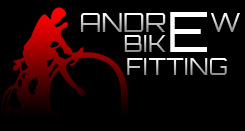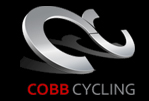What is Bike Fitting many ask … Bike Fitting is not choosing the right size, that is bike sizing. Bike Fitting is modifying the bike to best fit the rider’s pedaling mechanics. The analogy I like to use is shopping for a suit. We go to our favorite retailer and someone there helps us find the correct size. What happens next is magic. A tailor gets called and the suit gets altered to fit the client as the client is today. The same is true with a bike fit. It is a snapshot in time in which the rider is optimized for comfort on all contact points with a bike because:
COMFORT = POWER
Out of the 5 contact points on a road bike and 9 on a Tri/TT bike The most important contact points are the feet. The feet are the foundation by which the kinetic chain will work together. The feet are where the power is produced and we are robbed of potential power if the feet are not properly positioned in relation to the knees. There are potentially 5 primary changes that can be made at the pedal/cleat of each foot in order to maximize the foot/pedal interface. This is a total of 10 changes/adjustments at the feet alone.
Cleat – Fore/Aft position
This modification looks at the placement of the cleat with relation of the 1st and 5th methatarsal head. While shoes have changed a lot since the first clip in pedal/shoe was launched, the position of the cleat has somewhat remained the same.
Cleat – Medial/Lateral position
A lot of time is spent looking at the foot from a medial/lateral side because while doing this we can observe how well or poorly a foot/knee is tracking. Getting the medial/lateral position to be optimally located under the knee will allow for greater force/power generation, allow the rider to feel better contact with the pedal and reduce the possibility of knee pain.
Cleat – Wedging
A often overlooked part of the bike fit which could translate in immediate relief from discomfort and possibly pain in the knee/s and lower back. Cleat wedging is paramount to achieving a full and even connection to the pedal. Over 80% of the population has one or both feet that have feet that require some kind of compensation so that they are able to produce power while feeling more comfortable at the foot/pedal. Most people have a varus foot tilt which means that the foot/feet naturally get loaded more on the outside than the inside.
Cleat – Rotation
Cleat rotation is often not accurately not dialed in because most cleats have some float thus this does not become a concern as long as there is room to move the ankles around. This is partially true however optimal rotational set-up will enable to rider to still feel comfortable even after fatigue has set in and the pedaling mechanics are affected by such fatigue.
Leg Length Shim
Let leg shims are often used to compensate for leg leg discrepancies. It is very common that riders do have a functional leg length discrepancy while seated on the bike but not when going about every day life. The functional discrepancies can be caused by a variety of factors such as uncomfortable saddle, anterior/posterior hip rotation, feet of different sizes, flexibility and more. While the body learns how to compensate for a leg length discrepancy, once it is addressed the pedal stroke will become much smoother and even.






